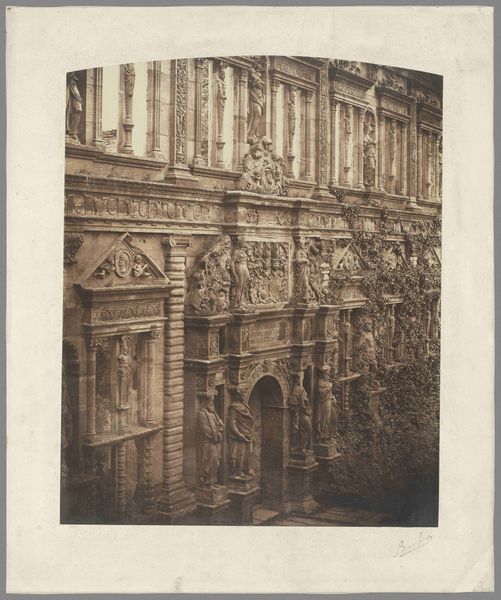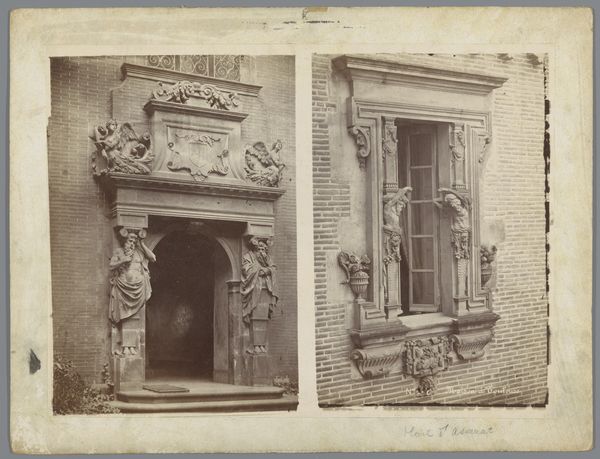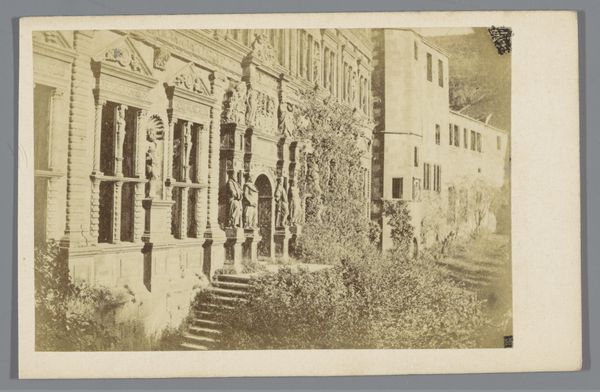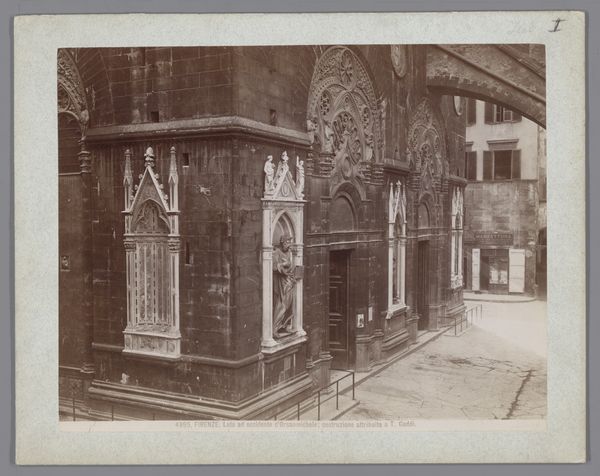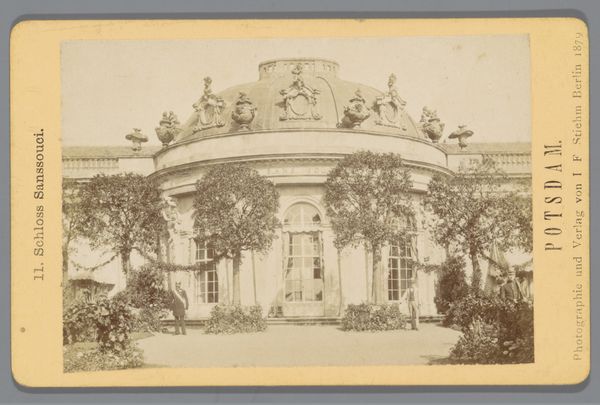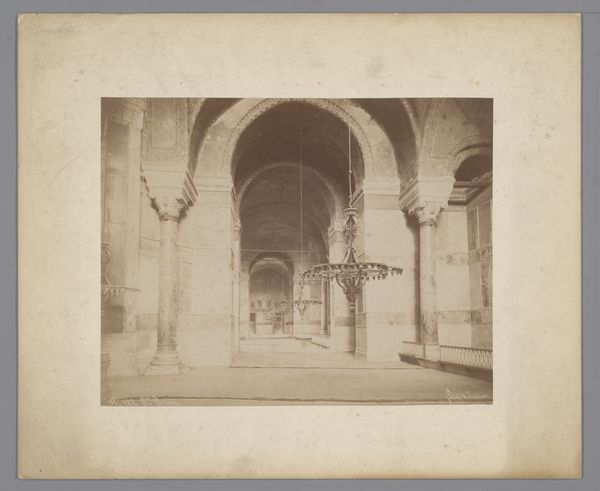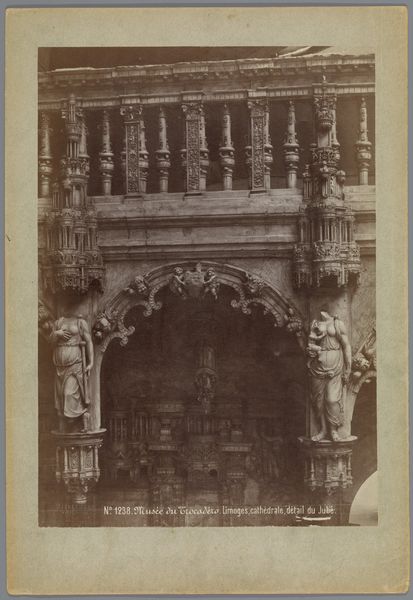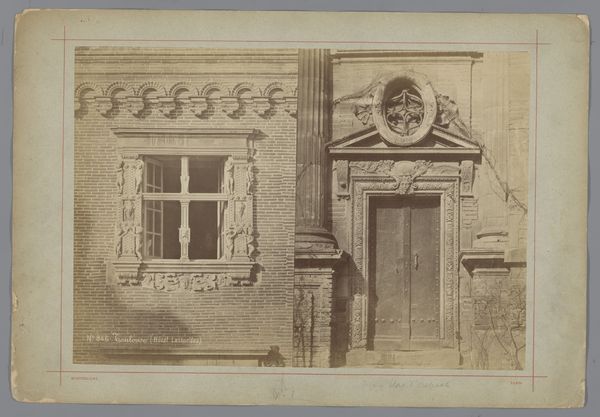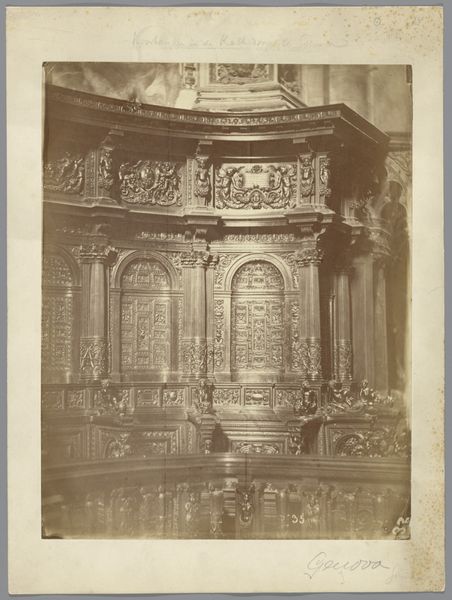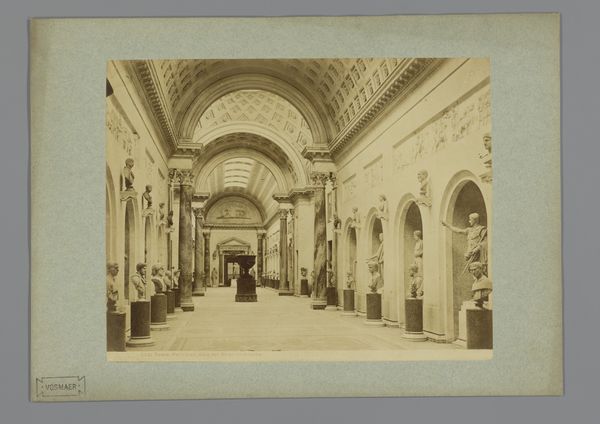
Entree van het Otto Heinrichsgebouw in Schloss Heidelberg, Duitsland 1860 - 1875
0:00
0:00
print, photography
# print
#
landscape
#
photography
#
ancient-mediterranean
#
building
Dimensions: height 61 mm, width 86 mm
Copyright: Rijks Museum: Open Domain
Curator: This haunting photograph, taken between 1860 and 1875 by L. Meder, presents the entrance of the Otto Heinrich Building in Heidelberg Castle, Germany. The Rijksmuseum holds this sepia-toned portal to the past. Editor: Sepia, indeed! It looks like a scene pulled from a gothic novel, all muted light and shadow. There's a real sense of decaying grandeur. The overgrowth swallows everything up. It's romantic and eerie all at once. Curator: It's a marvelous example of historical documentation through photography. The photo immortalizes the architectural details: those intricate sculptures, the receding columns, the watchful statues guarding the entrance. Meder really captured that transition point, a threshold, if you will. Editor: A threshold into what, though? That's the question that nags at me. The building feels like it's been abandoned, almost reclaimed by nature. And you wonder, was it war, disease, just simple neglect that turned a once-magnificent place into something like this? There's such quiet defiance about that. It resists categorization. It invites re-appropriation by the very vines it battles. Curator: Perhaps Meder wanted to explore that duality: human creation intertwined, and eventually surrendered, to the power of nature. Think about it—the artist is preserving not only stone and mortar, but this powerful sentiment regarding ephemerality and time, you know? Editor: Precisely. And whose stories are etched into those stones, I wonder? Beyond the Hapsburgs or whomever built the place, whose labor, whose dreams, anxieties are part of it? Look closely - some have interpreted Heidelberg as one of the earliest manifestations of German Romantic nationalism and its relationship to earlier Classicism, how can you not resist pondering its implications? Curator: The image has this enduring quality—even with the wear and tear visible, the detail in those statues and friezes still speaks to artistic intent and dedication. The interplay of textures is phenomenal, the smooth stone and wild ivy make a kind of visual push and pull. It's a visual harmony! Editor: And one more small detail strikes me. Look at those stone figures. They look out with such detached serenity as the world around them crumbles or perhaps morphs beyond all recognition. It feels like they know a secret, the trickster's silent laugh watching the fortunes of humankind ebb and flow. Curator: It does have that kind of mystique, doesn’t it? You feel compelled to imagine all sorts of possible narratives as you gaze at it. Editor: Which just goes to show the potent layers in what might seem, at first glance, like a straightforward architectural study. This photograph speaks volumes!
Comments
No comments
Be the first to comment and join the conversation on the ultimate creative platform.
